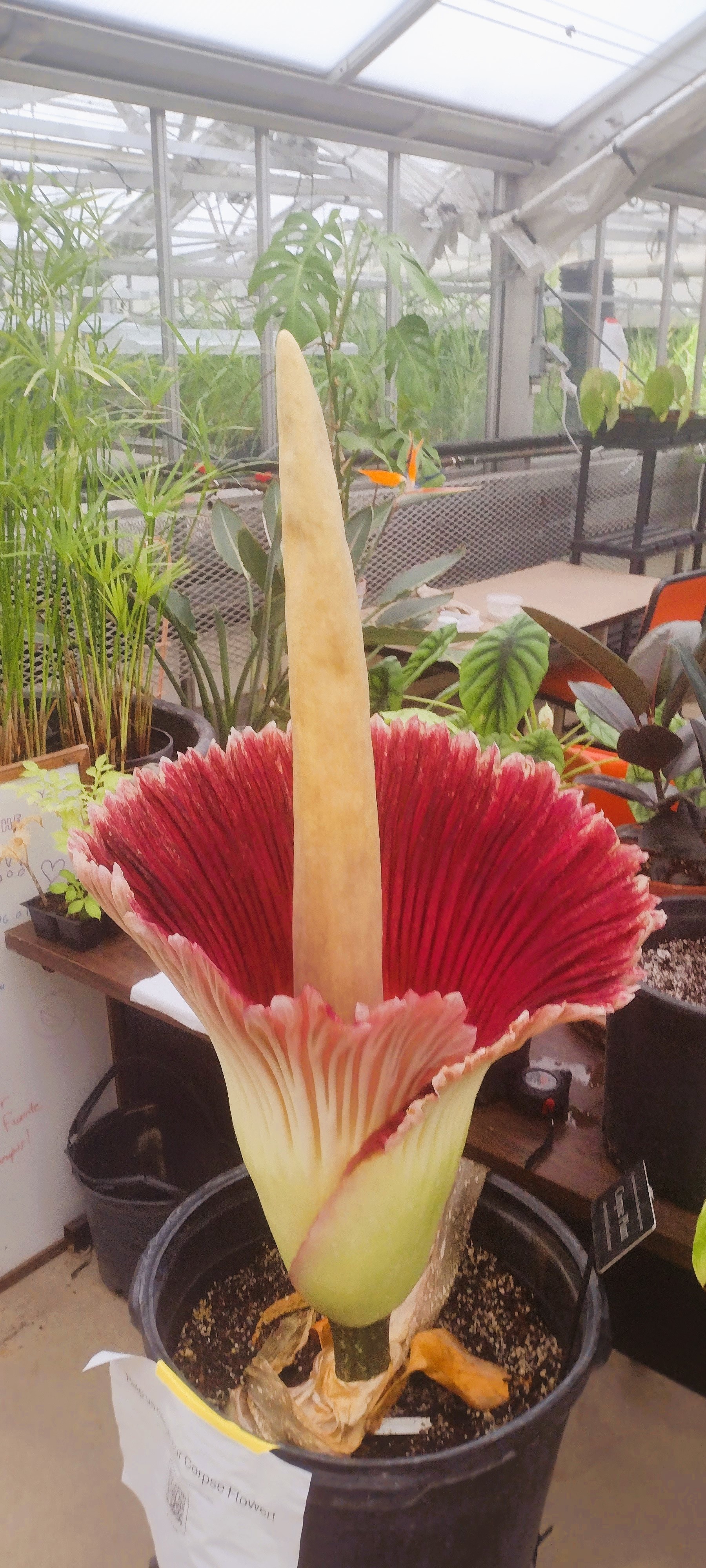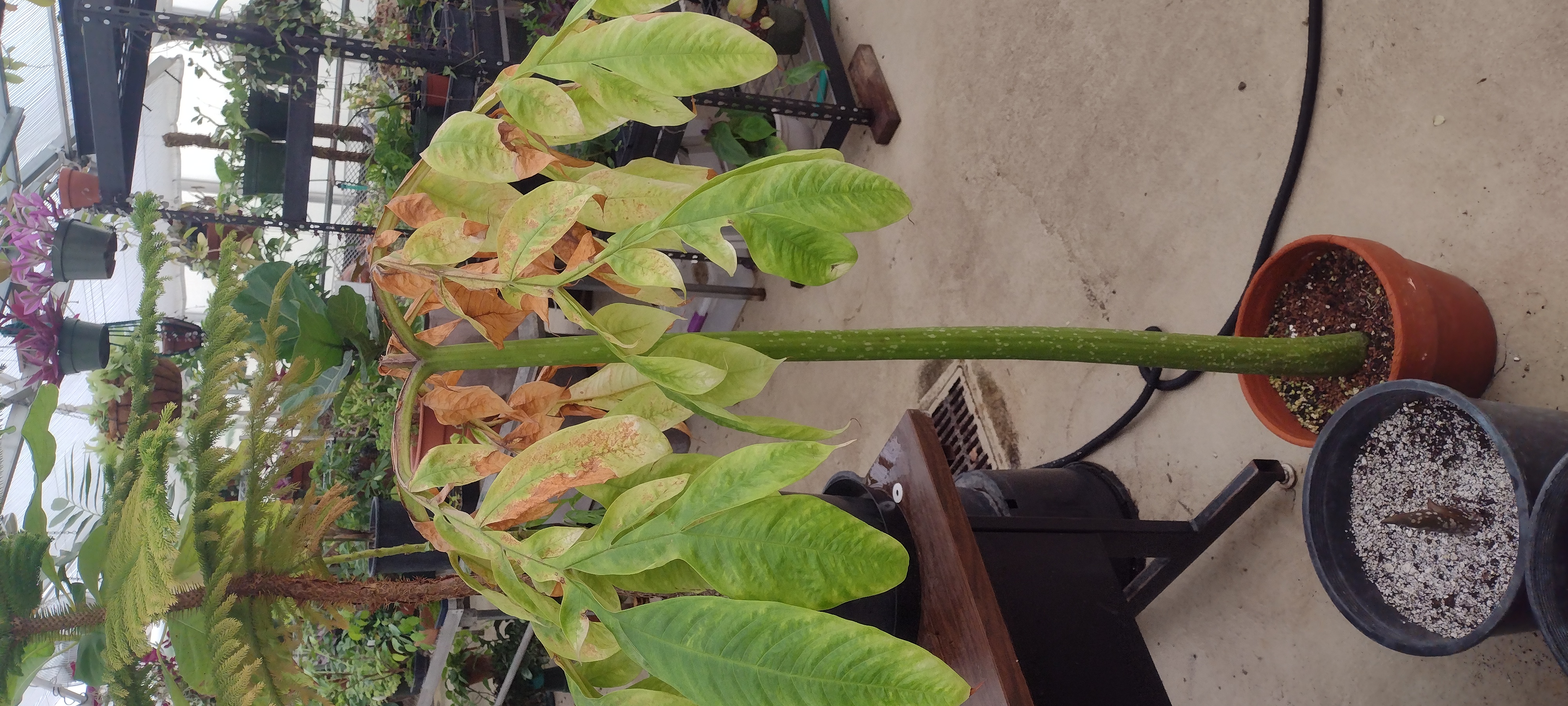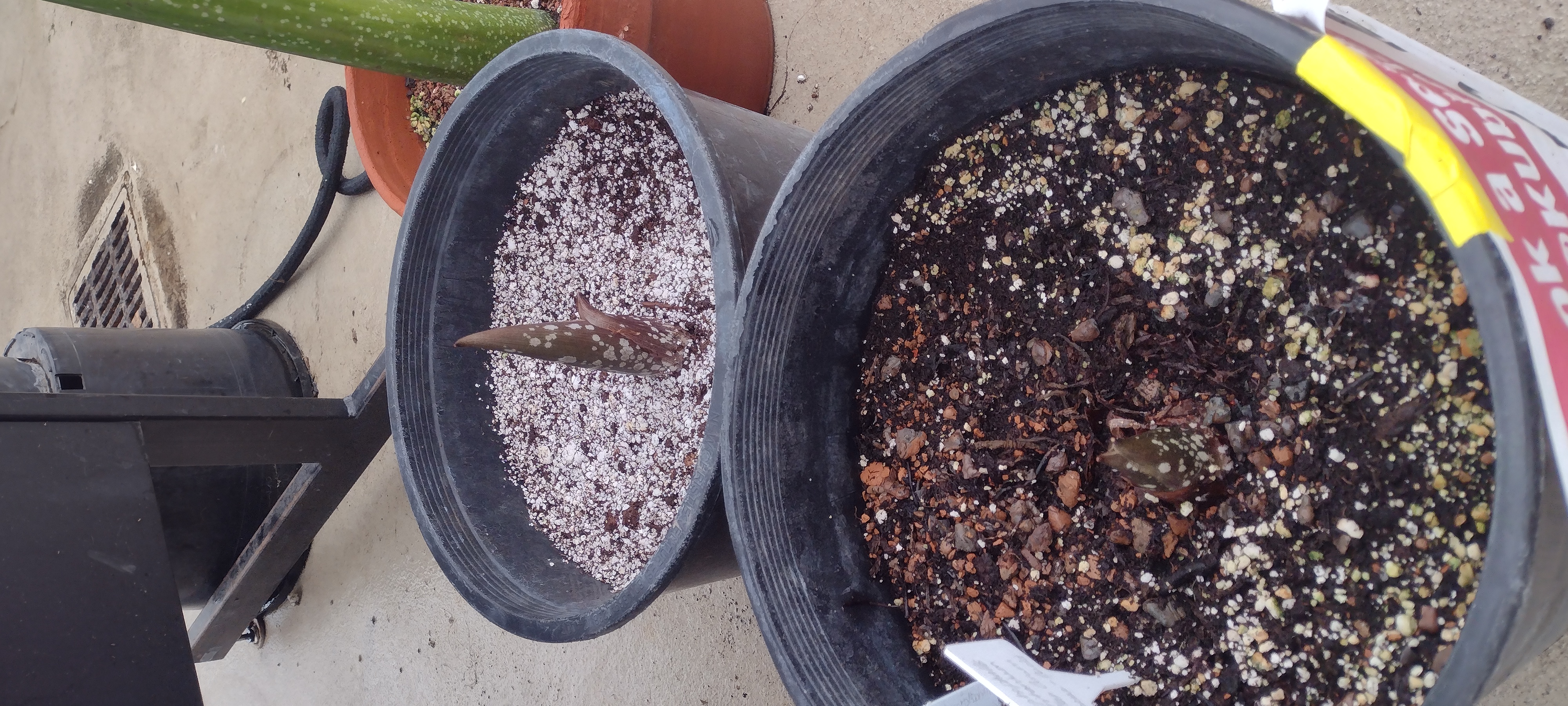Rare Corpse Flower Blooms in KU Greenhouse


On Saturday, August 10, 2024, an endangered Titan arum (Amorphophallus titanum), or Corpse Flower, bloomed at the University of Kansas Ecology and Evolutionary Biology Greenhouse at Haworth Hall! This rare plant is native to the island of Sumatra, Indonesia, and generally blooms once every three to seven years in greenhouse conditions, though it could be a decade or more between blooms in the wild. This particular Amorphophallus titanium last bloomed on September 13, 2021.
Corpse plants are called such because when they bloom, they attract carrion beetles and flies to help pollinate it via a particularly pungent scent of rotting meat. Peak bloom occurred on Saturday, when the spathe unfurled and revealed the flowers at the base of the spadix. In addition to the intense rotting meat smell, the flower’s coloring resembles rotting flesh, and the spadix generates heat to simulate a fresh corpse – it was 15 degrees hotter within the spadix than without! While there are no carrion beetles in the greenhouse to help with pollination, Dan Ruffing, KU Greenhouse Manager, harvested the pollen from this flower in order to hand pollinate future flowers. Now that the flower has bloomed, in several days it will wilt away, and the bulb will be dormant for several months before re-entering the vegetative cycle. After several more years of storing energy, it will flower once again.

The Haworth greenhouse has six A. titanum plants. In addition to the largest that is currently flowering, there are three smaller baseball-sized bulbs in the vegetative cycle, and two young plants with small leaves. The smallest plants were grown from seed at Kansas State University using pollen from our corpse flower at KU.
Over 300 people came to see the corpse flower in bloom on Saturday and Sunday at the KU Lawrence campus.